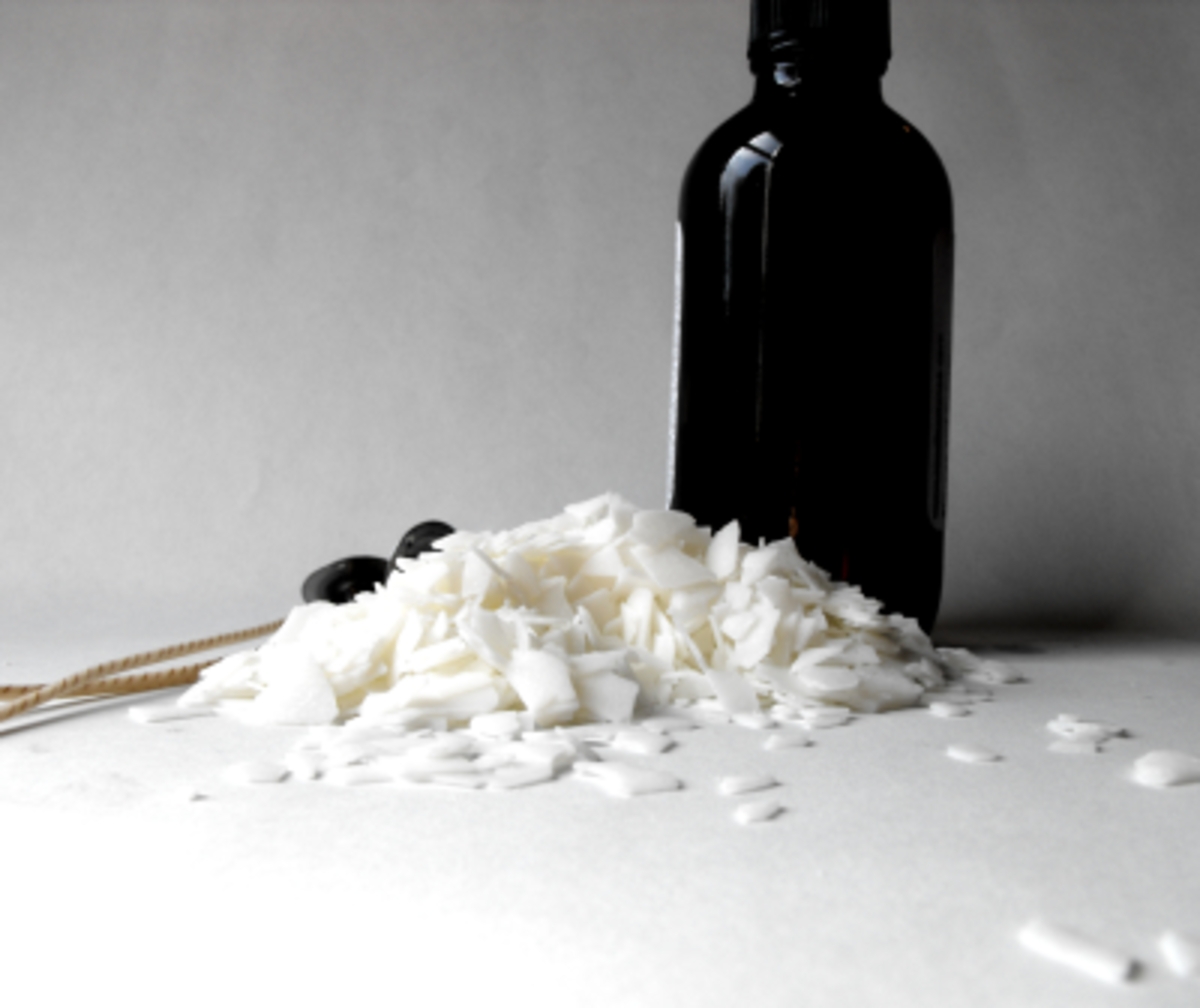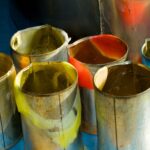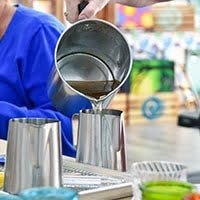Have you ever wondered how hot do you get beeswax when making candles? The temperature at which beeswax is heated plays a crucial role in the candle making process.
From melting the wax to adding fragrance oils and pouring it into molds, the right temperature is essential for achieving high-quality candles. In this article, we will delve into the specific temperature requirements for working with beeswax and explore the importance of precision in maintaining the ideal heat level throughout the candle making process.
When it comes to crafting candles using beeswax, understanding the melting point of this natural ingredient is key. We will discuss the specific temperature at which beeswax becomes workable for creating beautiful and fragrant candles. Additionally, we will explore different heating methods and tools that can be used to achieve the ideal temperature range for beeswax, ensuring optimal results in your candle making endeavors.
In order to prevent issues like overheating or burning your beeswax, it’s important to monitor its temperature closely throughout the entire process. We will provide tips on using thermometers or other tools to gauge and maintain the right heat level while melting and working with beeswax. Join us as we uncover important insights about handling beeswax at just the right temperature for safe and successful candle making.
The Melting Point of Beeswax
Beeswax is a natural substance that has been used for centuries to make candles. However, in order to work with beeswax effectively, it’s crucial to understand its melting point and the specific temperature at which it becomes workable for candle making. The melting point of beeswax is approximately 144 to 147 degrees Fahrenheit (62-64 degrees Celsius). It’s important to heat the beeswax at the right temperature to avoid any damage or changes in its properties.
Why Temperature Matters
The temperature at which beeswax melts is essential because heating it beyond its melting point can cause discoloration, loss of scent, or even burning. On the other hand, if not heated enough, the beeswax may not fully liquefy, resulting in a poor-quality candle. Understanding and controlling the temperature during the candle-making process is crucial for achieving desired results.
Heating Methods
There are various methods for heating beeswax, each with its own temperature range. Double boilers are commonly used to melt beeswax gently and evenly at a controlled temperature between 145-175 degrees Fahrenheit (63-79 degrees Celsius). Another method involves using hot plates or electric wax melters, which allow for precise temperature control. Microwaving beeswax should be done cautiously as it can cause overheating due to uneven distribution of heat.
When making candles with beeswax, it’s important to consider how hot you get the wax in order to ensure that the candles turn out as intended. By understanding the specific temperature at which beeswax melts and becoming workable for candle making, and by utilizing suitable heating methods and monitoring tools, you can create high-quality candles without damaging the natural properties of beeswax.
Heating Methods
When it comes to heating beeswax for candle making, there are a few different methods that can be used, each with its own temperature range and considerations. The method chosen will depend on personal preference, equipment availability, and the size of the batch being made. Here are some common heating methods for working with beeswax:
1. Double Boiler: Using a double boiler is a popular method for melting beeswax as it provides gentle and even heat distribution. To use this method, simply fill the bottom pot with water and place the beeswax in the top pot. The water should be heated to around 145-175°F (63-79°C), which will melt the beeswax without causing it to overheat.
2. Hot Plate: Another option for melting beeswax is to use a hot plate or electric wax melter. These devices allow for precise temperature control and can maintain the wax at the ideal temperature of 145-175°F (63-79°C) throughout the melting process.
3. Microwave: While not as commonly used as double boilers or hot plates, microwaving beeswax is a quick and convenient method for small batches. When using this method, it’s important to use short intervals of 30 seconds or less to avoid overheating the wax. The ideal temperature range for melting beeswax in a microwave is also 145-175°F (63-79°C).
No matter which heating method is chosen, it’s crucial to monitor the temperature of the beeswax closely to prevent overheating or burning. Using a thermometer specifically designed for candle making can help ensure that the wax reaches and maintains the correct temperature without going above or below the recommended range.
Be sure to consider these different heating methods and their respective temperature ranges when working with beeswax for candle making to achieve optimal results in terms of both quality and safety.
Monitoring the Temperature
When using beeswax to make candles, it is essential to monitor the temperature carefully to ensure that the beeswax doesn’t overheat or burn during the melting process. Overheating can result in a loss of fragrance and color in the beeswax, affecting the quality of the candles. To prevent these issues, it is crucial to use a thermometer or other tools to monitor and control the temperature.
Using a Thermometer
One of the most effective ways to monitor the temperature when melting beeswax is by using a thermometer specifically designed for candle making. A candy or digital thermometer can be placed directly in the melting beeswax to accurately measure its temperature. The ideal melting point for beeswax is between 145°F and 147°F (62-64°C). It is important not to exceed this temperature range as overheating can lead to discoloration and loss of fragrance.
Other Tools for Temperature Monitoring
In addition to thermometers, there are other tools that can be used to ensure that the beeswax doesn’t overheat during the melting process. Some candle makers use a hot plate with adjustable heat settings to maintain a consistent and controlled temperature while others prefer double boilers. Regardless of the method used, it is important to pay close attention and make any necessary adjustments if the temperature begins to rise too high.
Avoiding Overheating
To avoid overheating beeswax, it is recommended to heat it slowly and gently. This allows for better control over the temperature and reduces the risk of scorching or burning. It’s also important to stir the beeswax periodically while melting it, which helps distribute heat evenly throughout the wax. By carefully monitoring and controlling the temperature of the beeswax, candle makers can ensure that their candles maintain their desired qualities and characteristics without any unwanted effects from overheating.
By following these tips on using a thermometer or other tools to ensure that beeswax doesn’t overheat or burn during the melting process, candle makers can produce high-quality candles with desirable fragrance and color, avoiding potential issues related to overheating.
Cooling and Pouring
When working with beeswax to make candles, it is essential to understand the ideal temperature range for adding fragrance oils or other additives to the melted beeswax, as well as the proper temperature for pouring the wax into candle molds. Maintaining the correct temperature during these stages of the candle-making process is crucial to achieving high-quality results.
Adding fragrance oils or other additives to melted beeswax should be done within a specific temperature range to ensure that the scents are properly integrated and that the wax maintains its desired consistency. The ideal temperature for this step typically falls between 160°F and 185°F. Working within this range allows the beeswax to effectively bind with the added ingredients, resulting in a well-scented and visually appealing candle.
Once the fragrance oils or other additives have been thoroughly mixed with the melted beeswax, it is important to pay attention to the temperature before pouring the wax into candle molds. The proper pouring temperature for beeswax is typically around 145°F to 180°F. Pouring at this temperature ensures that the mold will be filled evenly and that any potential cooling inconsistencies are minimized, leading to a more uniform finished product.
When making candles with beeswax, being mindful of the temperature at which fragrance oils and other additives are added, as well as when pouring the melted wax into molds, plays a crucial role in achieving desirable results. By following these recommended temperature ranges throughout these steps, candle makers can create products that are not only visually appealing but also effectively scented.
- It’s important not to overheat or underheat your beeswax during this process
- Consider using a thermometer specifically designed for candle making
- Practive makes perfect
Potential Issues
When working with beeswax to make candles, it’s crucial to be mindful of the temperature to avoid potential issues that can arise from overheating. One of the main risks of overheating beeswax is the loss of scent or color in the final product.
Beeswax has a natural, sweet fragrance and a warm, golden hue that can be compromised if it is exposed to excessive heat during the melting process. This could result in candles that lack the pleasant aroma and attractive appearance that are characteristic of beeswax candles.
To avoid the loss of scent or color when working with beeswax, it’s important to monitor the temperature carefully as the wax melts. Keeping the temperature within the recommended range for beeswax ensures that its natural characteristics are preserved, resulting in high-quality candles with a delightful scent and beautiful color. Using a thermometer specifically designed for candle making can be very helpful in this regard, as it allows for precise monitoring of the temperature throughout the melting process.
Another potential issue that can arise from overheating beeswax is the risk of creating an unsafe working environment due to flammable conditions. Beeswax has a flash point of approximately 204 degrees Celsius (400 degrees Fahrenheit), which means that if it is heated beyond this temperature, there is a risk of igniting a fire. This underscores the importance of being mindful not only of preserving the quality of the beeswax but also ensuring safety during the candle making process.
It’s essential to be aware of these potential issues and take appropriate measures to prevent them when working with beeswax for candle making. By understanding how hot do you get beeswax when making candles and taking necessary precautions, you can ensure that your candles turn out beautifully scented, brilliantly colored, and safe for enjoyment.
| Potential Issues | Risks |
|---|---|
| Loss of Scent or Color | Compromised fragrance and appearance |
| Safety Precaution | Risk of flammable conditions from overheating |
Safety Precautions
Beeswax is a popular choice for making candles due to its natural, clean-burning properties. However, it’s crucial to understand the proper temperature when working with beeswax to ensure both quality and safety. This section will emphasize the importance of maintaining the correct temperature throughout the candle-making process.
When heating beeswax, it’s essential to be mindful of the specific melting point of beeswax, which is approximately 144 to 147 degrees Fahrenheit (62-64 degrees Celsius). Heating methods such as double boilers, hot plates, or microwaves can be used to melt beeswax, but it’s important to monitor the temperature closely to avoid overheating. Overheating can lead to a loss of scent or color in the beeswax, affecting the quality of the candles.
To prevent issues related to overheating, using a thermometer is highly recommended. By regularly monitoring the temperature of the melted beeswax, you can ensure that it stays within the ideal range. Additionally, being cautious while handling hot wax and following safety guidelines is crucial for avoiding burns or fires during the candle-making process.
Properly cooling and pouring melted beeswax is also vital for candle making. The ideal temperature range for adding fragrance oils or other additives is around 140-160 degrees Fahrenheit (60-71 degrees Celsius), while pouring into candle molds should be done between 90-100 degrees Fahrenheit (32-38 degrees Celsius) to ensure successful candle formation. Maintaining these temperature ranges will result in high-quality candles that burn evenly and emit a pleasant scent.
| Temperature Range | Candle-Making Process |
|---|---|
| 144-147°F (62-64°C) | Melting Point of Beeswax |
| 140-160°F (60-71°C) | Adding fragrance oils or additives |
| 90-100°F (32-38°C) | Pouring into candle molds |
Conclusion
In conclusion, the temperature at which beeswax is heated when making candles is a crucial factor in the candle-making process. It is important to understand the melting point of beeswax and the ideal temperature ranges for heating, adding fragrance oils, and pouring into molds. By maintaining precise temperature control throughout the process, you can ensure the quality of your candles while also prioritizing safety.
Whether using a double boiler, hot plate, or microwave to heat beeswax, it is essential to monitor the temperature closely using a thermometer or other tools. Overheating beeswax can result in the loss of scent or color and may even pose a fire hazard. By practicing proper heating methods and safety precautions, you can avoid these issues and achieve desirable results in your candle-making endeavors.
Ultimately, by paying close attention to how hot you get beeswax when making candles and following best practices for temperature control, you can create high-quality candles with optimal scent throw and aesthetic appeal. Precision in temperature management will not only enhance the overall candle-making experience but also ensure that your finished products are safe to use.
Frequently Asked Questions
How Hot Should Beeswax Be to Make Candles?
The ideal temperature for beeswax to make candles is around 160-170°F. This ensures that the wax is fully melted and ready to be poured into candle molds without overheating or burning.
How High to Heat Beeswax?
When heating beeswax, it is important not to exceed a temperature of 185°F. Going beyond this temperature can cause the wax to discolor or even catch fire. It’s crucial to monitor the temperature closely while melting beeswax.
How Hot Should Wax Be to Make Candles?
For making candles, wax should be heated to a temperature of around 170-180°F. This allows the wax to become completely liquid and ready for pouring into molds, creating smooth and evenly-burning candles. Careful temperature control is essential in candle-making process.

Welcome to my candle making blog! In this blog, I will be sharing my tips and tricks for making candles. I will also be sharing some of my favorite recipes.





